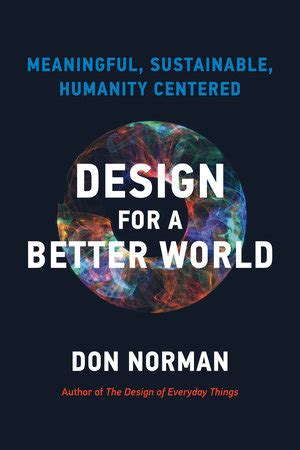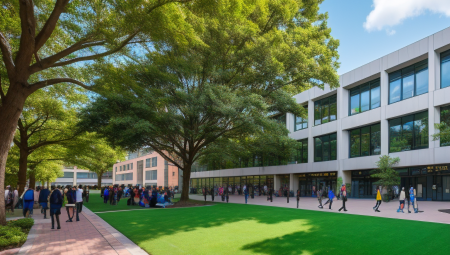In a world where social and environmental issues are becoming increasingly urgent, the role of industrial design in addressing these challenges has never been more crucial. From creating sustainable products to designing solutions for communities in need, the field of industrial design for social impact offers a unique opportunity to make a positive difference in the world.
This blog post will explore the key elements of designing for a better world, highlighting the programs and initiatives offered by the top universities in the United States. From understanding the principles of social impact design to measuring the success of industrial design projects, we will delve into the curriculum highlights, collaborative projects, and success stories that demonstrate the impact of these programs. We will also hear from students who have experienced firsthand the power of social impact design and discuss the future trends and innovations in this rapidly evolving field. Join us as we uncover the potential of industrial design to create a better world for all.
Table of Contents
Understanding Industrial Design for Social Impact
Industrial design for social impact is a multidisciplinary field that focuses on creating products, services, and systems that address social, environmental, and economic challenges. It involves applying design thinking and creative problem-solving to develop solutions that have a positive impact on people and communities.
Key elements of industrial design for social impact include understanding the needs and perspectives of the end users, considering the environmental and social impact of the design process and product lifecycle, and collaborating with stakeholders from various sectors to ensure sustainable and inclusive outcomes.
Top industrial design programs in the US offer specialized courses and resources for students interested in social impact design, providing opportunities to work on real-world projects with nonprofit organizations, government agencies, and industry partners.
Success in industrial design for social impact is measured not only by the aesthetic and functional quality of the design, but also by its ability to create positive social change, improve quality of life, and address systemic issues such as inequality, accessibility, and sustainability.
Key Elements of Designing for a Better World
When it comes to designing for a better world, there are several key elements that must be taken into consideration. Firstly, sustainable and eco-friendly materials are essential in order to minimize the impact on the environment. Using materials that are renewable, recyclable, or biodegradable is crucial in creating designs that are beneficial for the planet.
Another important element is functionality. Good design should not only look aesthetically pleasing but also serve a purpose and meet the needs of the user. Whether it’s designing products, buildings, or systems, functionality should always be a top priority in order to create designs that truly make a positive impact on the world.
In addition, inclusivity and accessibility are key elements when it comes to designing for a better world. Designs should be made with the consideration of all people, regardless of their age, gender, ability, or background. This includes creating spaces and products that are accessible to everyone and cater to the diverse needs of different individuals.
Lastly, ethical and responsible practices are crucial when designing for a better world. This involves considering the impact of the design process on workers, communities, and the overall society. It also means promoting fair labor practices, supporting local artisans, and ensuring that the production and distribution of designs are done in a sustainable and ethical manner.
Top US Universities Offering Industrial Design Programs
When it comes to pursuing a career in industrial design, choosing the right university can make all the difference. The United States is home to several prestigious institutions offering top-notch industrial design programs. These programs are designed to equip students with the necessary skills and knowledge to excel in the industry and make a positive impact through their designs.
One such university is the Rhode Island School of Design (RISD), known for its strong focus on creative exploration and innovation. RISD offers a comprehensive industrial design program that combines practical skills with critical thinking and problem-solving. Students at RISD have the opportunity to work on real-world projects and collaborate with industry professionals, giving them a holistic learning experience.
Another leading institution in the field of industrial design is the ArtCenter College of Design in Pasadena, California. The college’s industrial design program is highly respected for its interdisciplinary approach and emphasis on human-centered design. Students at ArtCenter are encouraged to think outside the box and push the boundaries of traditional design, preparing them to be future leaders in the industry.
Additionally, Carnegie Mellon University’s School of Design offers a unique blend of art, technology, and entrepreneurship in its industrial design program. The school’s focus on research and innovation sets it apart, allowing students to explore new materials and technologies to create sustainable and impactful designs.
Curriculum Highlights of Social Impact Design Programs
When it comes to social impact design programs, the curriculum is an essential factor in determining the effectiveness and success of the program. The curriculum highlights play a crucial role in shaping the future of students and preparing them to make a positive impact on society through their design skills.
One of the key elements of the curriculum in social impact design programs is the focus on human-centered design. This approach ensures that students learn to empathize with the communities they are designing for and create solutions that truly address the needs and challenges faced by these communities.
Another important aspect of the curriculum is the emphasis on sustainability and ethical design. Students are taught to consider the environmental and social impact of their designs, and to develop solutions that are not only innovative but also sustainable and ethical.
Furthermore, the curriculum often includes collaborative projects and partnerships with local communities and organizations. This gives students the opportunity to apply their skills in real-world scenarios and gain valuable experience working on projects that have a direct impact on society.
Collaborative Projects and Partnerships for Social Design
Collaborative projects and partnerships are essential components of social design initiatives, as they involve multiple stakeholders working together to address complex social challenges. These collaborations often bring together designers, non-profit organizations, government agencies, and community members to develop innovative solutions that have a positive impact on society. By leveraging the diverse expertise and resources of different partners, social design projects can achieve greater scale and effectiveness.
One of the key benefits of collaborative projects in social design is the opportunity to tap into specialized knowledge and skills from various disciplines. For example, a partnership between a design firm and a public health organization could result in the development of a new medical device that meets the needs of underserved communities. Similarly, collaborations between design teams and environmental advocacy groups can lead to the creation of sustainable products that promote eco-friendly lifestyles.
Furthermore, partnerships in social design can facilitate broader community engagement and participation. By involving local residents, community leaders, and other stakeholders in the design process, collaborative projects can ensure that the solutions are culturally sensitive and contextually relevant. This participatory approach not only enhances the social impact of the design outcomes but also fosters a sense of ownership and empowerment among the target population.
In conclusion, collaborative projects and partnerships play a crucial role in advancing social design by harnessing collective expertise, resources, and community involvement. These initiatives are instrumental in delivering sustainable, inclusive, and meaningful solutions that address pressing social needs and contribute to positive societal change.
Impact Assessment and Measurement in Industrial Design
Industrial design plays a crucial role in creating products and systems that have a positive impact on society. However, it’s important to assess and measure this impact to ensure that design efforts are truly making a difference. Impact assessment and measurement in industrial design involves evaluating the social, environmental, and economic effects of design projects.
One key element in impact assessment is identifying the intended outcomes of a design project. This involves setting clear goals and objectives for the project and determining how these can be measured. For example, if the goal is to reduce waste in a manufacturing process, measurements can be taken to track the reduction in waste over time.
Another important aspect of impact assessment is understanding the various stakeholders involved in the design process. This includes considering the perspectives and needs of the end-users, as well as the potential impacts on the broader community. By engaging with stakeholders throughout the design process, designers can gain valuable insights into the potential outcomes of their work.
Measuring the impact of industrial design projects also involves collecting and analyzing data to determine whether the intended outcomes have been achieved. This may involve conducting surveys, gathering qualitative feedback, and using quantitative metrics to track changes over time. By systematically measuring the impact of design projects, designers can identify areas for improvement and make informed decisions about future projects.
Funding and Grants for Social Impact Design Initiatives
Securing funding and grants is a crucial aspect of driving social impact design initiatives. Funding allows organizations and individuals to bring their innovative ideas to life and make a tangible difference in the world. With the right financial support, impactful design projects can reach their full potential and create lasting change in communities.
One of the key sources of grant funding for social impact design initiatives is through non-profit organizations and foundations. These entities often provide financial support to projects that align with their mission and values, making them ideal partners for designers looking to make a positive impact. Applying for grants from these organizations requires a well-crafted proposal that clearly articulates the potential impact of the design project.
In addition to non-profit organizations, government agencies and international development institutions also offer funding opportunities for social impact design initiatives. These sources of funding often come with specific guidelines and eligibility criteria, and successful applicants are usually required to demonstrate a strong understanding of the social issues they aim to address through their design work.
Furthermore, the rise of impact investing and corporate social responsibility has also created opportunities for design initiatives to secure funding from private sector entities. Companies with a strong commitment to social and environmental causes are increasingly looking to fund design projects that align with their values, offering a win-win situation for both the designers and the corporate funders.
Success Stories: Notable Industrial Design Projects
Industrial design is a field that has the power to transform the world for the better. There are many success stories of notable industrial design projects that have made a significant impact on society. These projects showcase the key elements of designing for a better world and serve as inspiration for aspiring industrial designers.
One such success story is the design of the One Laptop Per Child project, which aimed to provide affordable and durable laptops to children in developing countries. This project not only improved access to education for children but also opened up new opportunities for their communities. The design team worked closely with local stakeholders to ensure that the laptops met their specific needs and were culturally sensitive.
Another notable industrial design project is the development of LifeStraw, a portable water filter that has brought clean and safe drinking water to millions of people around the world. This innovative design has had a significant impact on public health, especially in regions where access to clean water is limited. The success of LifeStraw demonstrates the importance of considering social impact in industrial design projects.
These success stories highlight the collaborative projects and partnerships that are essential for social impact design. They also underscore the importance of impact assessment and measurement in industrial design, as these projects have been able to demonstrate their tangible benefits to society. The funding and grants for these projects have also played a crucial role in their success, providing the necessary resources to bring these designs to life.
Student Perspectives: Experiences in Social Impact Design
As students, exploring the field of Social Impact Design can be an eye-opening experience. It provides a platform to understand how design can create sustainable solutions for various social and environmental challenges.
Participating in collaborative projects and partnerships for social design has allowed students to gain real-world experience and work on projects with a tangible impact on communities. This hands-on approach has been a crucial aspect of their learning journey.
Furthermore, gaining insights into the impact assessment and measurement in industrial design has provided students with a deeper understanding of how to evaluate the effectiveness of their designs in addressing social issues. This practical knowledge has been invaluable in shaping their perspectives on the role of design in creating positive change.
In addition, hearing success stories from notable industrial design projects has served as an inspiration for students. Learning from the experiences of professionals in the field has broadened their horizons and fueled their passion for leveraging design for social impact.
Future Trends and Innovations in Industrial Design for Social Impact
As the world continues to face social, environmental, and economic challenges, the role of industrial design in creating positive social impact has become increasingly important. In recent years, there has been a growing focus on leveraging industrial design to address pressing global issues such as access to clean water, sustainable energy, healthcare, and education.
One of the future trends in industrial design for social impact is the integration of technology and design to create innovative solutions. With advancements in materials science, artificial intelligence, and sustainable manufacturing, designers are able to develop products and systems that can have a lasting positive impact on communities around the world.
Another emerging trend is the emphasis on inclusive and user-centered design. Industrial designers are now paying close attention to the diverse needs and experiences of end users, particularly those in marginalized communities. By prioritizing inclusivity and accessibility, design solutions can better address the unique challenges faced by different populations, leading to more equitable outcomes.
Furthermore, collaboration and interdisciplinary partnerships are expected to play a key role in driving innovation in industrial design for social impact. By bringing together experts from various fields, such as engineering, public health, and sociology, designers can gain valuable insights and perspectives that can inform the development of holistic and sustainable solutions to complex social challenges.





